Tired of sluggish logistics and frustrated customers? AI is revolutionizing every aspect of your business, from enhancing customer experience to optimizing supply chains. Early adopters report a 15% drop in costs, 35% less inventory, and a whopping 65% improvement in service! Imagine unlocking extra capacity and slashing downtime with AI and IoT.
This blog explores 10 ways AI can supercharge your supply chain, boosting efficiency and customer satisfaction.
Table of Contents
1. Demand Forecasting with AI in Supply Chain Management
For customers, convenience equals a good shopping experience. And among all the good shopping experiences you can offer, nothing beats, knowing exactly how much of a product they’ll need before they even need it.
That’s the power of AI-powered demand forecasting. It’s like having a crystal ball for your inventory, but way cooler (and more accurate)!
Here’s how AI works its magic:
- Supercharged Accuracy: AI analyzes everything from past sales to upcoming holidays, giving you a sharper picture of future demand. Take Google Cloud’s Vertex AI – it boasts a 10% to 20% jump in forecasting accuracy. No more overstocked shelves or missed sales!
- Always on the Pulse: AI constantly monitors your situation, adjusting plans on the fly based on real-time changes. This is perfect for industries where demand can be unpredictable.
- Inventory Sweet Spot: By knowing exactly what’s coming down the pike, you can keep just the right amount of stock on hand. No more empty shelves or overflowing warehouses, according to McKinsey, AI can slash errors by up to 50%.
Real-World Examples:
- Ecommerce Boom: AI helps online retailers predict demand for hot products. For instance, Accenture helped a food company cut forecasting errors by 6-8 points, leading to millions in potential savings!
- Seasonal Savvy: AI takes the guesswork out of holidays. Companies like Statworx use AI to predict demand for thousands of products months in advance, ensuring you have what customers crave during peak seasons.
2. Supply Chain Optimization
Logistics are… tough to handle, especially for novices in the e-commerce section. Forget juggling maps and spreadsheets! AI is revolutionizing logistics by streamlining the way goods move from A to B. This isn’t just science fiction – AI can slash operating costs by up to 40% in the logistics industry.
Here’s how AI takes the wheel:
- Smarter Routes, Happier Drivers: AI analyzes traffic patterns and real-time conditions to create the most efficient delivery routes. This means faster deliveries, fewer detours, and happy drivers! It’s a win-win for everyone.
- Warehouse Whiz: Imagine never running out of stock or having a warehouse overflowing with unused products. AI helps with that too! By analyzing past sales and current trends, AI predicts demand and optimizes inventory levels. This can reduce warehouse costs by nearly 20% while ensuring you always have what customers need.
- The Customer is King (and Queen): Faster deliveries, fewer errors, and readily available products translate to one thing: happy customers! By optimizing logistics, AI keeps your customers coming back for more.
Real-World Impact:
While only 21% of logistics companies have embraced AI yet, the results are undeniable. Early adopters have seen a 15% reduction in logistics costs and some are experiencing a whopping 30% efficiency gain in local deliveries.
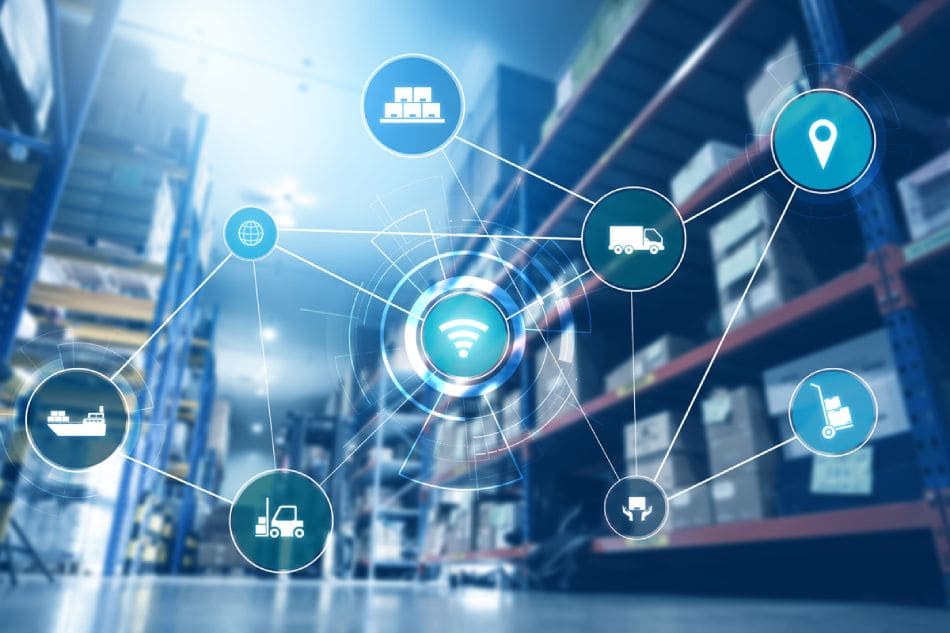
3. AI-Powered Risk Management
The world of business is full of surprises, and a resilient supply chain needs to be prepared for anything. That’s where AI comes in as your secret weapon against risk.
Here’s how AI keeps your supply chain on track:
- Market Forecaster: AI analyzes vast amounts of data to predict market fluctuations, helping you anticipate and adjust to potential disruptions. Imagine knowing when a raw material price might spike or a sudden shift in consumer demand is coming. With AI, you can be a step ahead.
- Model Master: AI isn’t just about predictions, it’s also about building robust risk models. By analyzing complex relationships and identifying key variables, AI helps ensure your risk assessments are accurate and reliable
- Cost-Cutting Champion: AI automates risk management tasks, freeing up human experts to focus on strategic initiatives. This translates to lower operational costs and increased efficiency, allowing you to invest more in your core business.
The Numbers Don’t Lie:
The impact of AI in risk management is undeniable. The market is expected to grow by 11% annually, and 77% of financial institutions already leverage AI for risk management. By 2025, half of all businesses are projected to have AI integrated into their risk management processes.
4. Optimizing Shipping and Delivery
Speed is crucial when it comes to swaying your customers, which is why getting your products to customers quickly and efficiently is crucial. That’s where AI steps in as your secret weapon for smarter shipping and delivery.
AI on the Road: Imagine a delivery truck that can predict traffic jams and reroute itself in real-time. That’s the power of AI-driven route optimization! By analyzing historical data, traffic conditions, and even weather patterns, AI creates the most efficient delivery routes possible. This translates to faster deliveries, happier customers, and even reduced fuel costs for your business.
Adapting to the Unexpected: The world throws curveballs, and your supply chain needs to be prepared. AI-powered dynamic routing takes this into account. If there’s an accident on the highway or a sudden downpour, AI can adjust delivery routes on the fly, ensuring your products still arrive on time.
Real-World Examples:
- Maersk Line, a shipping giant, uses AI to predict equipment failures on their vessels. This helps them avoid costly breakdowns and keeps their deliveries on schedule.
- A global company used AI to optimize shipping costs. By analyzing real-time data, they were able to identify the most cost-effective routes and save money on every shipment.
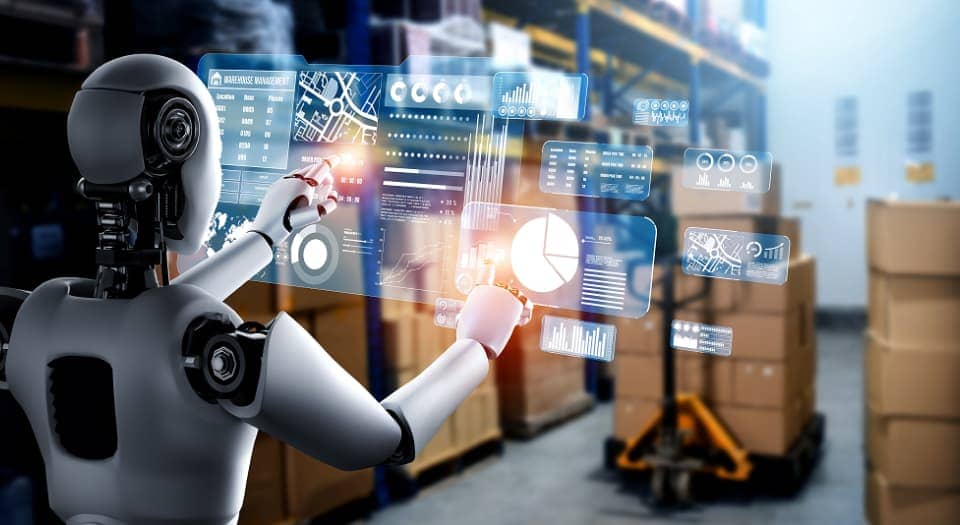
5. Accurate Inventory Management
Say goodbye to stockout headaches and hello to a smoother, more efficient supply chain when AI is transforming inventory management. That’s the magic of AI-powered inventory management! AI uses the “Internet of Things” (IoT) to track your products with laser focus, giving you a real-time picture of what’s on hand.
Here’s how AI keeps your inventory in perfect balance:
- Smart Stock Levels: AI analyzes past sales data, upcoming trends, and even weather patterns to predict exactly how much stock you need. This means no more guesswork – just the perfect amount of product to meet customer demand, according to McKinsey & Company, AI can slash inventory carrying costs by 20% and stockouts by 50%!
- Cost Savings Champion: AI automates tedious tasks like inventory tracking and ordering, freeing up your team to focus on other priorities. This translates to lower operational costs and increased efficiency for your business.
Real-World Example:
A retail company used AI to analyze data and predict demand. This allowed them to adjust inventory levels dynamically, ensuring they never ran out of popular items and avoided getting stuck with excess stock.
6. Demand Forecasting with External Data
Predicting customer demand can feel like looking into a crystal ball. But with AI, you can gain a sharper, more accurate picture of what your customers will want, even before they do. Studies show AI can slash demand forecasting errors by 50% and lead to a 65% reduction in lost sales. Additionally, AI can cut warehousing costs by 10% and administration costs by a staggering 40%!
AI goes beyond the basics: Unlike traditional methods that just analyze sales history, AI incorporates a wider range of data sources. This “holistic” approach considers everything from weather patterns to social media trends, just like Nike uses AI to predict demand for unreleased shoes.
Real-World Results: Imagine a food distributor who used AI to combine their sales data with external factors like restaurant reservations and weather forecasts. By doing this, they were able to improve their forecasting accuracy by a whopping 6-8 points, potentially saving them millions of dollars!
The Benefits of AI Forecasting:
- Supercharge Accuracy: AI can capture complex relationships between seemingly unrelated factors, leading to far more accurate predictions than ever before.
- Smarter Decisions: Armed with better forecasts, you can optimize inventory levels, avoid stockouts, and make smarter decisions about production and marketing.
- Cost Savings Galore: AI automates tedious tasks and reduces operational costs across the board, from warehousing to administration.
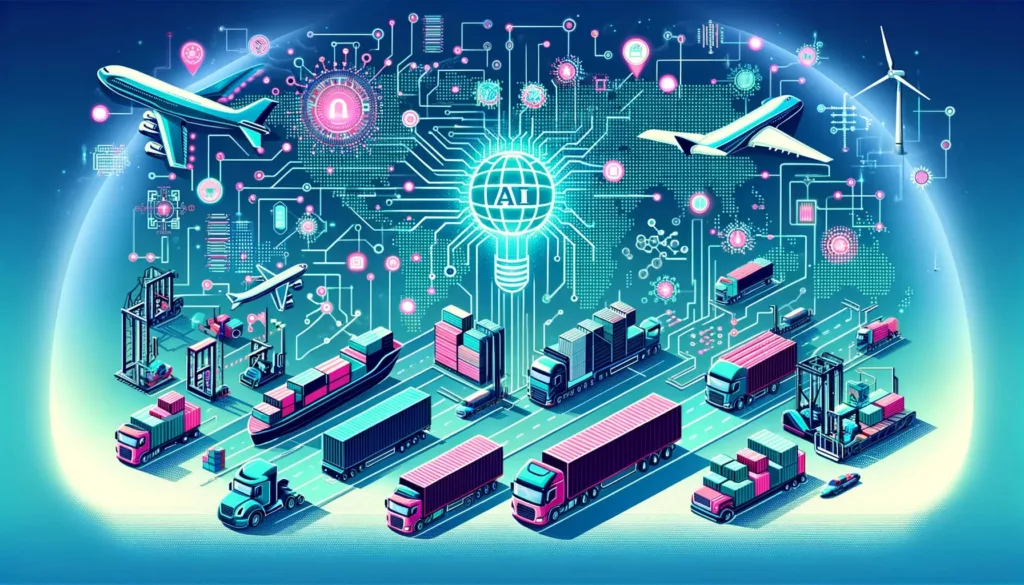
7. Enhancing Customer Service
Long wait times and frustrated customers? Not on your watch! AI is here to transform your customer service into a superhero experience. By 2025, AI is expected to power a whopping 95% of customer interactions! Already, 40% of businesses are leveraging AI to engage with customers, and studies show AI can:
- Reduce customer service costs by 30%
- Boost agent productivity by 14%
- Triple customer satisfaction rates
Meet Your AI Assistants: Imagine having tireless assistants who can answer customer questions, track shipments, and resolve issues around the clock. That’s the power of AI-powered chatbots and virtual assistants! They provide immediate answers, reducing wait times and keeping customers happy.
Real-World Results: Financial institutions are already using AI to revolutionize customer service. These AI-powered systems boost customer satisfaction and engagement, even leading to more sales opportunities, all while lowering service costs.
The Power of AI for Customer Service:
- Happy Customers, Happy Business: AI ensures customers get the information and support they need, right away. This translates to higher satisfaction and loyalty for your brand.
- Smarter Communication: AI handles routine inquiries, freeing up human agents for complex issues. This creates a more efficient system for everyone.
8. Supply Chain Risk Management
The world of business is full of surprises, and a disruption in your supply chain can bring everything to a halt. While only a small percentage of companies are currently using AI for procurement, 70% of s chain leaders plan to implement it by 2025 according to Gartner That’s where AI steps in as your shield against risk.
AI Identifies Threats Before They Strike: Imagine having a system that can scan vast amounts of data to identify potential problems in your supply chain, like a supplier delay or a transportation bottleneck. That’s the power of AI-driven risk assessment! By analyzing everything from weather patterns to geopolitical tensions, AI helps you anticipate and mitigate risks before they cause any damage.
Real-World Example: Retail giant Walmart uses AI to predict extreme weather events that could disrupt their supply chain. This allows them to take proactive measures, like rerouting shipments or securing additional inventory, to ensure their shelves stay stocked.
The Benefits of AI Risk Management:
- Proactive Problem Solving: Don’t wait for disaster to strike! AI helps you identify potential risks early, giving you time to develop a plan and minimize disruption.
- Efficiency on Autopilot: By avoiding disruptions, AI keeps your supply chain running smoothly and efficiently. This translates to happier customers and a stronger bottom line.
- Cost Savings Hero: Proactive risk mitigation saves money! Avoiding delays, stockouts, and other disruptions leads to significant cost savings for your business.
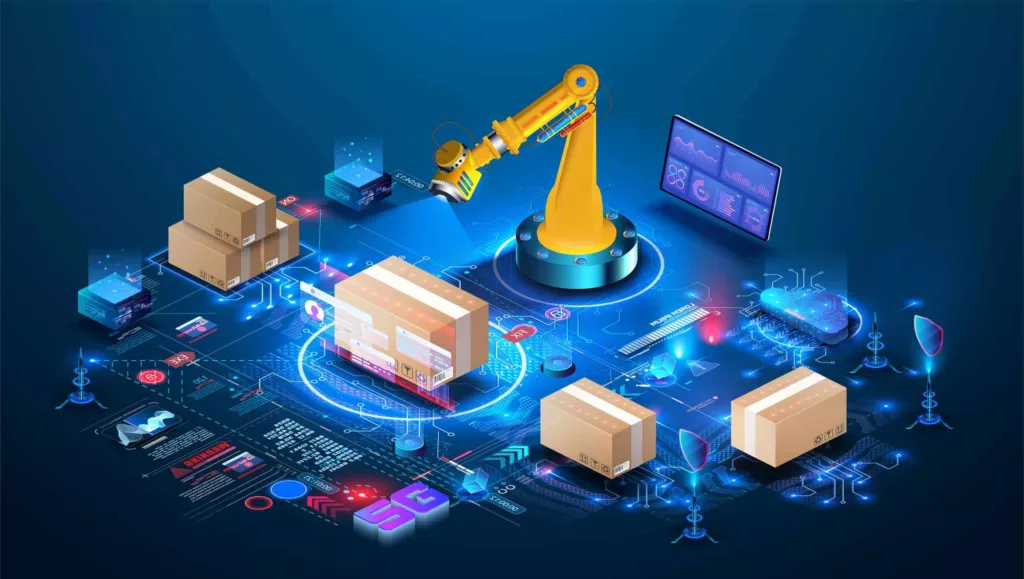
9. Generative AI for Risk Mitigation
Generative AI is a rapidly growing field, with 67% of IT leaders prioritizing it for their businesses within the next year and a half. While security concerns exist (as with any new technology), more than half of companies are already experimenting with generative AI, recognizing its potential to improve customer service and overall operations.
Imagine an AI that can not only identify risks but also invent entirely new ways to avoid them. That’s the power of generative AI for risk mitigation!
AI Goes Beyond the Obvious: Traditionally, risk mitigation involves finding solutions that already exist. Generative AI takes a more creative approach. By analyzing vast datasets, it can propose entirely new strategies, like designing supply chain networks that are less vulnerable to disruptions or products that rely on fewer critical suppliers.
Real-World Example: An aircraft manufacturer is leveraging generative AI to design airplanes with redundant components. This can help minimize the risk of flight groundings due to part failures [15].
The Benefits of Generative AI Risk Management:
- Innovation on Demand: Don’t settle for the same old risk mitigation strategies! Generative AI helps you discover entirely new approaches to protecting your business.
- Reduced Risk Exposure: By creating networks and products less susceptible to disruptions, generative AI helps you minimize risk exposure across your operations.
- Supplier Independence: Generative AI can design products that rely on a wider range of suppliers, reducing your dependence on any single source and mitigating supply chain risks.
10. Automation of Routine Tasks
Warehouse tasks can be repetitive and time-consuming. But what if you had tireless workers who could pick, pack, and sort items with incredible speed and accuracy? That’s the future with AI-powered automation!
Studies show AI can significantly improve logistics:
- Reducing inventories by up to 25%
- Boosting overall productivity by more than 40% by 2035
- Increasing efficiency in local deliveries by up to 30%
AI Takes the Repetitive Out of Routine: Imagine robots working alongside your warehouse staff, flawlessly handling picking, packing, and sorting. AI-powered automation frees up your human workers for more complex tasks, while significantly reducing errors and boosting overall efficiency.
Real-World Example: Amazon warehouses are a prime example of AI in action. They use robots to automate many tasks, allowing them to process massive volumes of orders quickly and efficiently.
The Benefits of AI Warehouse Automation:
- Fewer Errors, More Efficiency: AI-powered robots are incredibly precise, minimizing errors and ensuring your orders are always accurate. This translates to happier customers and a stronger reputation for your business.
- Human Potential Unleashed: By automating repetitive tasks, AI frees up your human workers to focus on higher-value activities, like problem-solving and customer service.
- A Streamlined Operation: AI can optimize your entire warehouse operation, ensuring a smooth workflow and maximizing efficiency at every step.
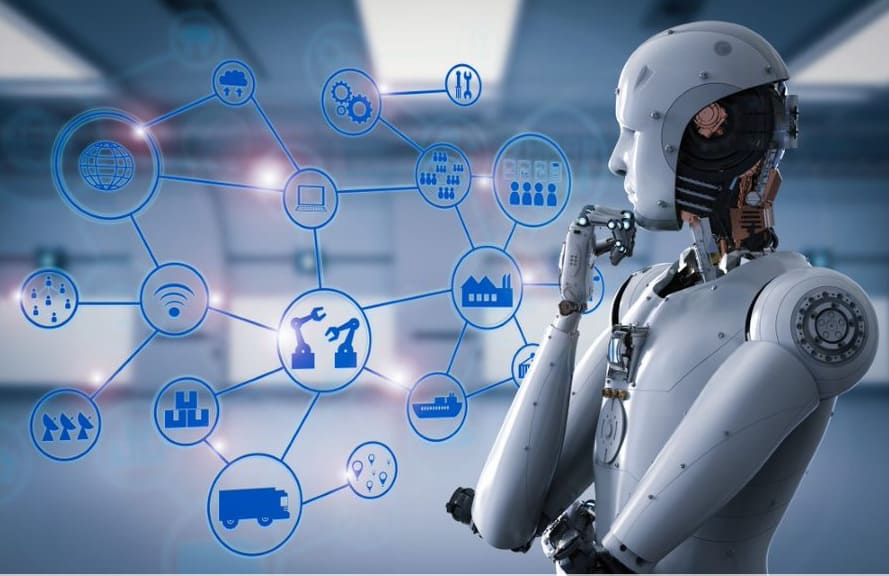
Conclusion
The Asia-Pacific (APAC) region is a hotbed of economic activity, and its supply chains are the backbone of global trade. However, these chains also face unique challenges, from complex geographies to ever-evolving customer demands.
The good news? Artificial intelligence (AI) is emerging as a powerful weapon in the fight for supply chain efficiency and visibility in APAC. As we’ve explored, AI can revolutionize your operations in ten key ways, from optimizing shipping routes to mitigating risks with unparalleled precision. But where do you start?
As one of the leading IT companies in the APAC region, VINOVA has ample experience in utilizing AI to optimize your business operations. Our team of experts can guide you through every step of the process, from identifying the right AI solutions to implementing them seamlessly within your existing operations.
Ready to unlock the power of AI for your APAC supply chain?
Contact VINOVA today for a free consultation. We’ll help you assess your needs, identify the most effective AI solutions, and develop a customized plan to achieve your unique business goals.